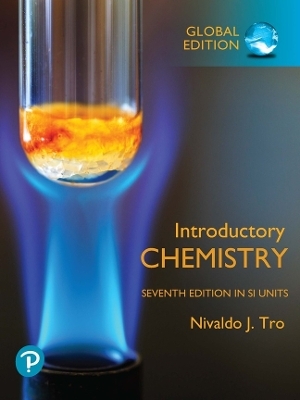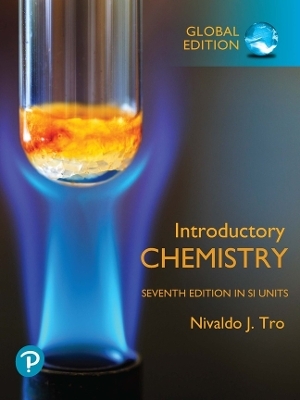
Introduction to Particle Technology 2e
Wiley-Blackwell (Hersteller)
978-0-470-72710-2 (ISBN)
- Keine Verlagsinformationen verfügbar
- Artikel merken
Particle technology is a term used to refer to the science and technology related to the handling and processing of particles and powders. The production of particulate materials, with controlled properties tailored to subsequent processing and applications, is of major interest to a wide range of industries, including chemical and process, food, pharmaceuticals, minerals and metals companies and the handling of particles in gas and liquid solutions is a key technological step in chemical engineering. This textbook provides an excellent introduction to particle technology with worked examples and exercises. Based on feedback from students and practitioners worldwide, it has been newly edited and contains new chapters on slurry transport, colloids and fine particles, size enlargement and the health effects of fine powders.
Topics covered include: Characterization (Size Analysis) Processing (Granulation, Fluidization) Particle Formation (Granulation, Size Reduction) Storage and Transport (Hopper Design, Pneumatic Conveying, Standpipes, Slurry Flow) Separation (Filtration, Settling, Cyclones) Safety (Fire and Explosion Hazards, Health Hazards) Engineering the Properties of Particulate Systems (Colloids, Respirable Drugs, Slurry Rheology) This book is essential reading for undergraduate students of chemical engineering on particle technology courses. It is also valuable supplementary reading for students in other branches of engineering, applied chemistry, physics, pharmaceutics, mineral processing and metallurgy. Practitioners in industries in which powders are handled and processed may find it a useful starting point for gaining an understanding of the behavior of particles and powders. Review of the First Edition taken from High Temperatures - High pressures 1999 31 243 - 251 ".. This is a modern textbook that presents clear-cut knowledge. It can be successfully used both for teaching particle technology at universities and for individual study of engineering problems in powder processing."
Martin Rhodes holds a Bachelor's degree in chemical engineering and a PhD in particle technology from Bradford University in the UK, industrial experience in chemical and combustion engineering and many years experience as an academic at Bradford and Monash Universities. He has research interests in various aspects of gas fluidization and particle technology, areas in which he has many refereed publications in journals and international conference proceedings. Martin is on the editorial boards of Powder Technology and KONA and on the advisory board of Advanced Powder technology. Martin has a keen interests in particle technology education and has published books and CDROM on Laboratory Demonstrations and directed continuing education courses for industry in the UK and Australia. He was co-founder of the Australasian Particle Technology Society. Martin has a Personal Chair in the Department of Chemical Engineering at Monash University, Australia, where he is presently Head of Department.
About the Contributors. Preface to the Second Edition. Preface to the First Edition. Introduction. 1. Particle Size Analysis. 1.1 Introduction. 1.2 Describing The Size Of A Single Particle. 1.3 Description Of Populations Of Particles. 1.4 Conversion Between Distributions. 1.5 Describing The Population By A Single Number. 1.6 Equivalence Of Means. 1.7 Common Methods Of Displaying Size Distributions. 1.8 Methods Of Particle Size Measurement. 1.9 Sampling. 1.10 Worked Examples. Test Yourself. Exercises. 2. Single Particles in a Fluid. 2.1 Motion Of Solid Particles In A Fluid. 2.2 Particles Falling Under Gravity Through A Fluid. 2.3 Non-Spherical Particles. 2.4 Effect Of Boundaries On Terminal Velocity. 2.5 Further Reading. 2.6 Worked Examples. Test Yourself. Exercises. 3. Multiple Particle Systems. 3.1 Settling Of A Suspension Of Particles. 3.2 Batch Settling. 3.3 Continuous Settling. 3.4 Worked Examples. Test Yourself. Exercises. 4. Slurry Transport. 4.1 Introduction. 4.2 Flow Condition. 4.3 Rheological Models For Homogeneous Slurries. 4.4 Heterogeneous Slurries. 4.5 Components Of A Slurry Flow System. 4.6 Further Reading. 4.7 Worked Examples. Exercises. Test Yourself. 5. Colloids and Fine Particles. 5.1 Introduction. 5.2 Brownian Motion. 5.3 Surface Forces. 5.4 Result of Surface Forces on Behaviour in Air and Water. 5.5 Influences of Particle Size and Surface Forces on Solid/Liquid Separation by Sedimentation. 5.6 Suspension Rheology. 5.7 Influence of Surface Forces on Suspension Flow. 5.8 Nanoparticles. 5.9 Worked Examples. Test Yourself. Exercises. 6. Fluid Flow Through a Packed Bed of Particles. 6.1 Pressure Drop-Flow Relationship. 6.2 Filtration. 6.3 Further Reading. 6.4 Worked Examples. Test Yourself. Exercises. 7. Fluidization. 7.1 Fundamentals. 7.2 Relevant Powder And Particle Properties. 7.3 Bubbling And Non-Bubbling Fluidization. 7.4 Classification Of Powders. 7.5 Expansion Of A Fluidized Bed. 7.6 Entrainment. 7.7 Heat Transfer In Fluidized Beds. 7.8 Applications Of Fluidized Beds. 7.9 A Simple Model For The Bubbling Fluidized Bed Reactor. 7.10 Some Practical Considerations. 7.11 Worked Examples. Test Yourself. Exercises. 8. Pneumatic Transport and Standpipes. 8.1 Pneumatic Transport. 8.2 Standpipes. 8.3 Further Reading. 8.4 Worked Examples. Test Yourself. Exercises. 9. Separation of Particles From a Gas: Gas Cyclones. 9.1 Gas Cyclones - Description. 9.2 Flow Characteristics. 9.3 Efficiency Of Separation. 9.4 Scale-Up Of Cyclones. 9.5 Range Of Operation. 9.6 Some Practical Design And Operation Details. 9.7 Worked Examples. Test Yourself. Exercises. 10. Storage and Flow of Powders - Hopper Design. 10.1 Introduction. 10.2 Mass Flow And Core Flow. 10.3 The Design Philosophy. 10.4 Shear Cell Test. 10.5 Analysis Of Shear Cell Test Results. 10.6 Summary Of Design Procedure. 10.7 Discharge Aids. 10.8 Pressure On The Base Of A Tall Cylindrical Bin. 10.9 Mass Flow Rates. 10.10 Conclusions. 10.11 Worked Examples. Test Yourself. Exercises. 11. Mixing and Segregation. 11.1 Introduction. 11.2 Types Of Mixture. 11.3 Segregation. 11.4 Reduction Of Segregation. 11.5 Equipment For Particulate Mixing. 11.6 Assessing The Mixture. 11.7 Worked Examples. Exercises. 12. Particle Size Reduction. 12.1 Introduction. 12.2 Particle Fracture Mechanisms. 12.3 Model Predicting Energy Requirement And Product Size Distribution. 12.4 Types Of Comminution Equipment. 12.5 Worked Examples. Test Yourself. Exercises. 13. Size Enlargement. 13.1 Introduction. 13.2 Interparticle Forces. 13.3 Granulation. 13.4 Worked Examples. Exercises. 14. Health Effects of Fine Powders. 14.1 Introduction. 14.2 The Human Respiratory System. 14.3 Interaction of Fine Powders with the Respiratory System. 14.4 Pulmonary Delivery of Drugs. 14.5 Harmful Effects of Fine Powders. Test Yourself. Exercises. 15. Fire and Explosion Hazards of Fine Powders. 15.1 Introduction. 15.2 Combustion Fundamentals. 15.3 Combustion In Dust Clouds. 15.4 Control Of The Hazard. 15.5 Worked Examples. Test Yourself. Exercises. 16. Case Studies. 16.1 Case Study 1. 16.2 Case Study 2. 16.3 Case Study 3. 16.4 Case Study 4. 16.5 Case Study 5. 16.6 Case Study 6. 16.7 Case Study 7. 16.8 Case Study 8. Notation. References. Index.
| Erscheint lt. Verlag | 11.3.2008 |
|---|---|
| Verlagsort | Hoboken |
| Sprache | englisch |
| Maße | 179 x 252 mm |
| Gewicht | 946 g |
| Themenwelt | Naturwissenschaften ► Chemie |
| ISBN-10 | 0-470-72710-1 / 0470727101 |
| ISBN-13 | 978-0-470-72710-2 / 9780470727102 |
| Zustand | Neuware |
| Informationen gemäß Produktsicherheitsverordnung (GPSR) | |
| Haben Sie eine Frage zum Produkt? |
aus dem Bereich


